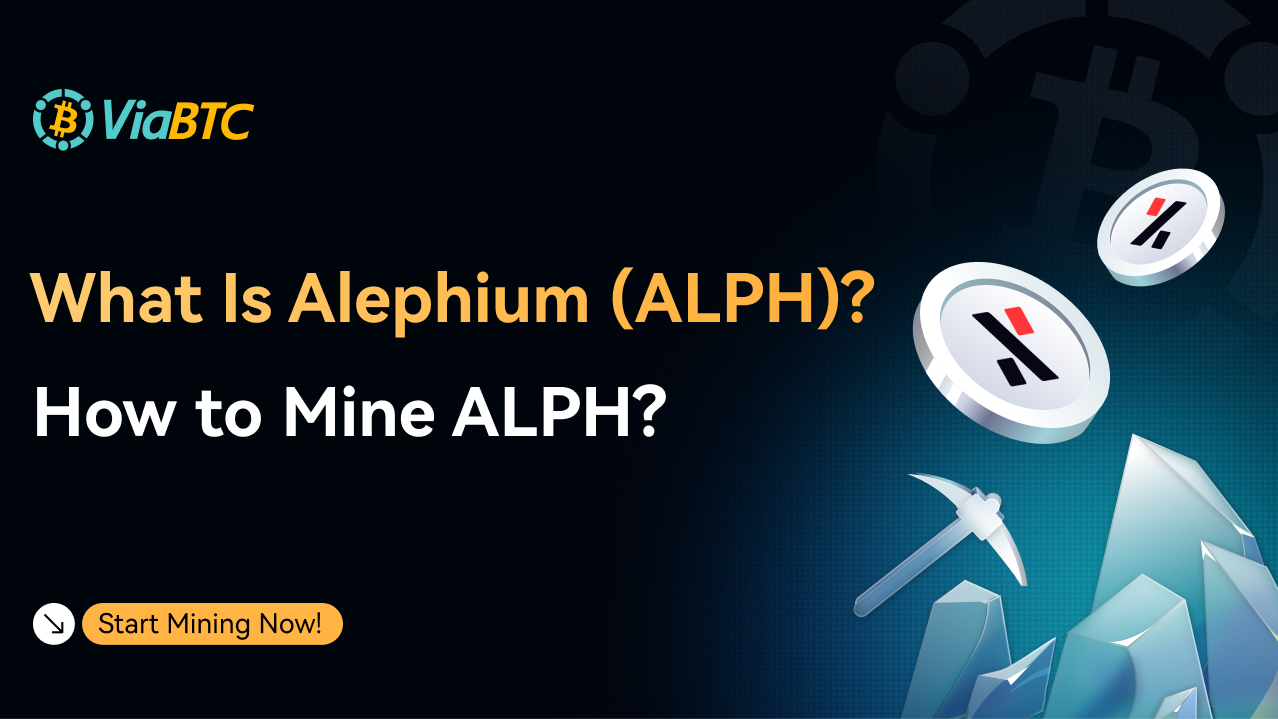Since the advent of Bitcoin, many new public chains have emerged, using it as a foundation to propose their own visions and solutions. We often see projects passionately promoting grand visions, claiming to solve the trilemma in blockchain. However, some public chains are merely repackaging old concepts, lacking genuine innovation and technical depth.
In such a mixed environment of numerous projects, truly groundbreaking innovations and technically sound public chains are rare. In recent years, Kaspa has been one standout, and another one to introduce today is Alephium.

Alephium: An Impressive ProjectEnergy-Efficient Mechanism Delivering Equal Security
Most people are already very familiar with the concept of PoW (Proof of Work). Bitcoin, the flagship project using this consensus mechanism, has been widely criticized both inside and outside the industry for its high energy consumption and environmental concerns. Alephium, however, has optimized PoW by innovatively introducing PoLW (Proof of Less Work). This mechanism burns ALPH tokens during the mining process to confirm blocks and solve hash problems, achieving a similar level of security while significantly reducing energy consumption. According to the Alephium team, PoLW mining can reduce PoW energy consumption by 87%.
For simplicity, let's assume the prices of BTC and ALPH tokens are the same:
- Under the PoW mechanism, Miner A must invest 1 BTC worth of electricity to earn 1.5 BTC.
- Under the PoLW mechanism, Miner B only needs to spend 0.13 ALPH on electricity and burn 0.87 ALPH to earn 1.5 ALPH.
In this scenario, although the overall cost remains the same, the energy consumption is drastically reduced.
Revolutionary Algorithm Powering Ecosystem Growth
As a next-generation blockchain platform, Alephium uses a unique sharding algorithm called BlockFlow. The core idea of this algorithm is to divide the blockchain into multiple shards, with each shard handling transactions within a specific group. This division allows transactions to be processed in parallel across different shards, greatly improving network throughput, achieving block production in seconds, and supporting up to 10,000 transactions (currently over 400 TPS, compared to Bitcoin’s ~7 TPS and Ethereum’s ~27 TPS).
At the same time, Alephium employs the sUTXO (Stateful UTXO) model, which merges mutable and immutable states in blockchain technology. Ethereum is a representative of mutable states, while Bitcoin represents immutable states. The advantage of mutable states is greater flexibility and more possibilities, while immutable states offer unique security.

Sourced from Alephium's white paper.
Alephium’s sUTXO model combines Bitcoin's security and immutability with Ethereum's flexibility and scalability, creating a system that incorporates both mutable and immutable states, representing yet another innovation in blockchain technology.
Comprehensive Tokenomics Model with a Focus on Mining
According to Alephium's white paper, the maximum supply of ALPH is 1 billion tokens. Of this, 86% is reserved for miners, meaning 860 million ALPH will be mined over approximately 82 years, starting from the launch of the mainnet in 2021. The remaining 14% is allocated for presales, ecosystem development, treasury, and team distribution.

The figure above the time-based reward emission rate for the first four years evolves.

The figure above illustrates the changes in reward distribution rates based on hashrate.
During the mining process, Alephium does not implement a halving mechanism. The block rewards are constrained by two curves based on hashrate and timestamp. Under specific time and hashrate conditions, the reward for each block equals the minimum value of the time-based and hashrate-based rewards. Currently, the average block reward for Alephium is about 0.4952 ALPH, with approximately 42,785 ALPH produced daily through mining, valued at around $56,000.
How to Mine ALPH?
With the arrival of more efficient ALPH mining rigs and Alephium’s network hashrate surging from 1 PH/s in July to 20 PH/s today, miners looking to profit from ALPH mining must invest in ASIC mining rigs. Market data at the time of writing indicates that daily earnings for 1 TH/s of ALPH hashrate are roughly 1.85 ALPH, equivalent to about $2.44.

The growth trend of ALPH hashrate is sourced from MinerStat.
According to official Alephium information, miners can choose to run a full node for solo mining or join a mining pool. However, the current competition in ALPH mining is intense, and for smaller miners with limited equipment, joining a pool is a wiser choice for stable mining profits. Currently, ViaBTC supports ALPH mining and offers two payment methods: PPLNS and Solo. Notably, from October 29, all miners participating in ALPH mining for 30 days can enjoy a zero-fee mining incentive.
For a detailed guide of ALPH mining, see the "ALPH Mining Guide."
Conclusion
In the blockchain world, high-performance public chains are not rare, and blockchain is not just a technology—it is an ecosystem. For any ecosystem, attracting developers, miners, and users is crucial.
For ALPH miners, in addition to Alephium's technical advantages, the early stage of mining is also an important factor that attracts them to participate. Currently, mining is still in its early stages, with only about 9% of ALPH tokens in circulation, leaving the majority yet to be mined by miners.